Key Takeaways
- Understanding how to forecast sales is crucial for proper inventory management.
- Sales forecasting is a method of predicting future sales using historical sales records and other available data.
- There are many different methods of sales forecasting.
- Each method considers a variety of different factors & data.
- Knowing how to forecast sales will save you storage space, prevent stockouts, and lower the excess inventory you need to carry.
Something new business owners quickly learn is the importance of knowledge. Not just in running a business but in terms of data. It may seem like a peripheral task, but gathering data over time and analyzing it is key to long-term success.
One of the most important pieces of data analytics is sales forecasting. Knowing how to forecast sales keeps overhead costs low and lets businesses commit resources elsewhere. Holding the right amount of inventory can also increase profits in the long run.
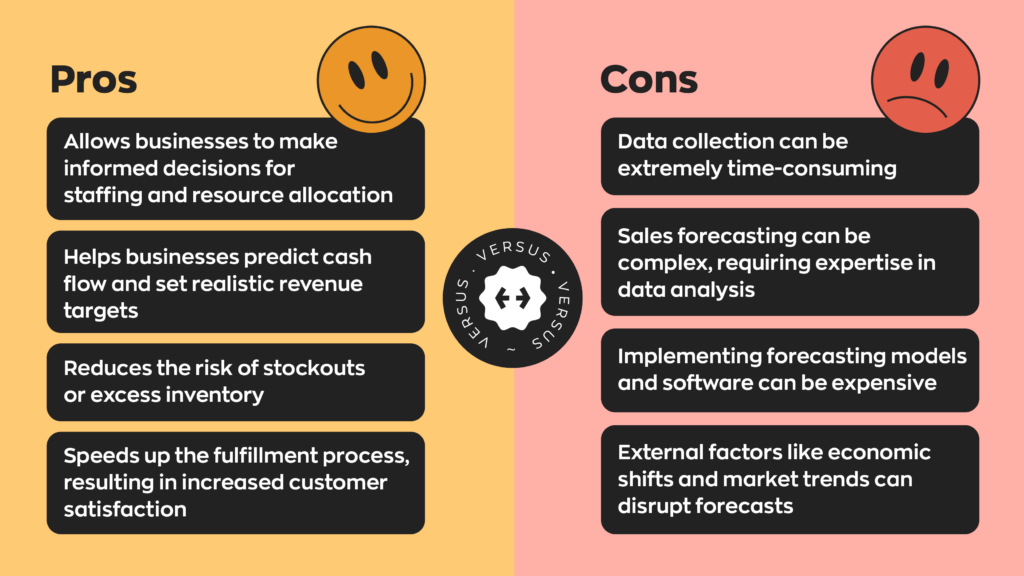
The long and short of it: knowing how to forecast sales is crucial. It plays a part in determining revenue and can decide whether a business stays afloat. So, what is sales forecasting? How does it help businesses? Is there more than one way to sales forecast? What does the process look like?
What is sales forecasting?
For the most part, the term is self-explanatory. Sales forecasting is the practice of predicting future sales numbers across a specific time period. While this is a simple concept, calculating the correct number requires a lot of data. A wildly inaccurate sales forecast can also cause severe issues, so it’s best to invest the proper time and care.
Why is knowing how to forecast sales important?
A sales forecast does a lot to help a business, but it also plays a significant role in deciding their overhead costs. Consumers tend not to think about it much, but every product on a retailer’s shelf comes at a cost. It costs them money to purchase it, and its presence takes up physical space. That product also has an opportunity cost: having item A means you can’t have item B there.
For now, though, we’ll focus on the per-unit cost. Many retail products are relatively inexpensive, but retailers purchase them in bulk. For example, let’s say a retailer purchases a product for $3. Buying 100 isn’t a huge problem: it’ll only cost $300 for the lot.
Let’s crank that up to 10,000 units– which is actually very little by retail standards. Suddenly all of that costs $30,000. Assuming the business sells all of those units, they’ll still make a profit. But if they only sell half, they now have $15,000 worth of products they can’t sell. That’s effectively a considerable loss. Forecasting sales properly helps avoid these issues.
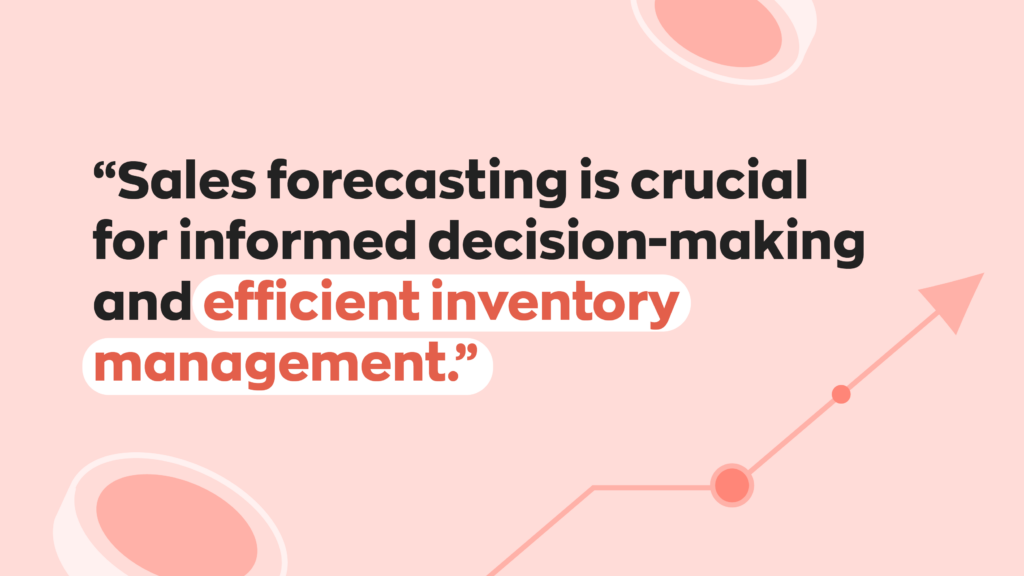
What affects sales forecasting?
Before a business can begin sales forecasting, it needs to identify what factors to consider– and there are a lot. It’s possible to control some of these factors, but not all. For example, manufacturing quality is ultimately something a business can control. On the other hand, they have no control over the change of seasons.
With that said, a common pitfall is trying to account for everything. There will always be something that will influence your business that you will have no control over. That’s just the way it is. Accounting for minor influences can throw off more complex calculations and lead to bad decisions. So, be weary before you build any contingencies into your sales forecast.
Popular sales forecast techniques
There are quite a few different ways of forecasting sales. This is partly because very few products are identical in every way. They solve different problems in different manners, and as a result, appeal to different audiences. Therefore, no matter how closely you think the two products are related, they may require a different technique. Here are some of the most popular methods for sales forecasting.
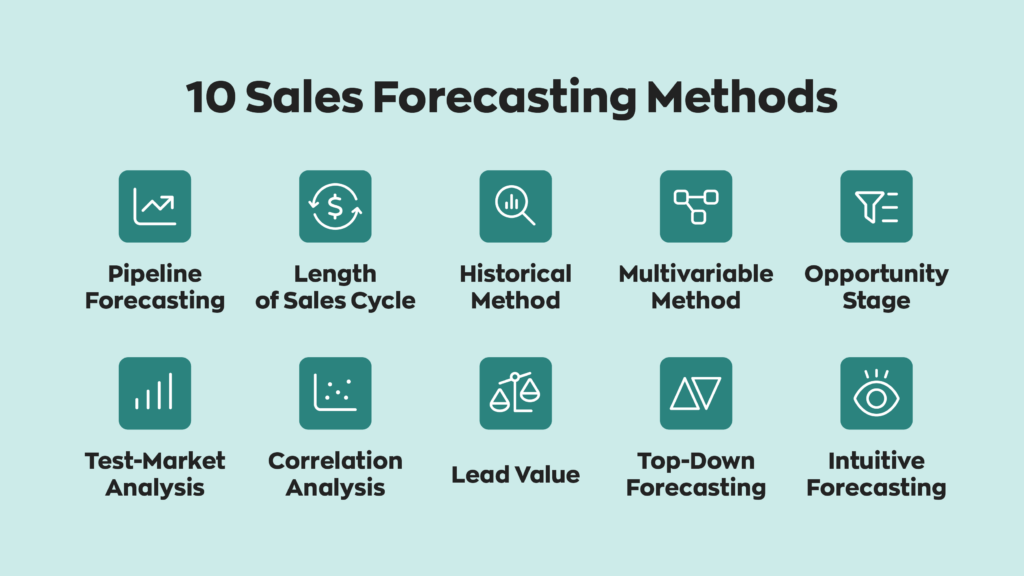
Length of sales cycle
This method uses previous customer data to predict how long it will take for potential customers to purchase a product. This calculation uses many different customer data points, such as lifetime value, location, and customer segmentation.
Historical method
Historical forecasting uses historical data to make predictions regarding future sales. While popular in retail, the banking and finance industries also regularly use it. It’s best to use this method when analyzing metrics across a long period of time. For instance, a business that sells seasonal sporting equipment may track performance over several years to predict future sales.
Multivariable method
Multivariable forecasting models seek to create an accurate forecast by considering a wide variety of factors. For example, they consider competitor activity, product launches, seasonal performance, and customer demographics.
Opportunity stage
This method considers customer pipelines and open opportunities to predict demand. This means factors like product popularity, competitor popularity, market trends, and customer sentiment. Generally speaking, companies with longer sales cycles like subscription models use this method.
Lead value
This method of sales forecasting uses lead generation data to predict future demand. These calculations draw from various factors like past purchases, general interests, and customer demographics.
Intuitive forecasting
We’re going to start this one off with a quick disclaimer. Most businesses shouldn’t use intuitive forecasting. It’s a method that relies more on the analyst’s general sentiment or feelings, rather than backed by hard numbers. While uncommon, it does still have a place. For instance, if you just started doing business and don’t have much data to draw from. That said, the chance that the average business will need this is slim.
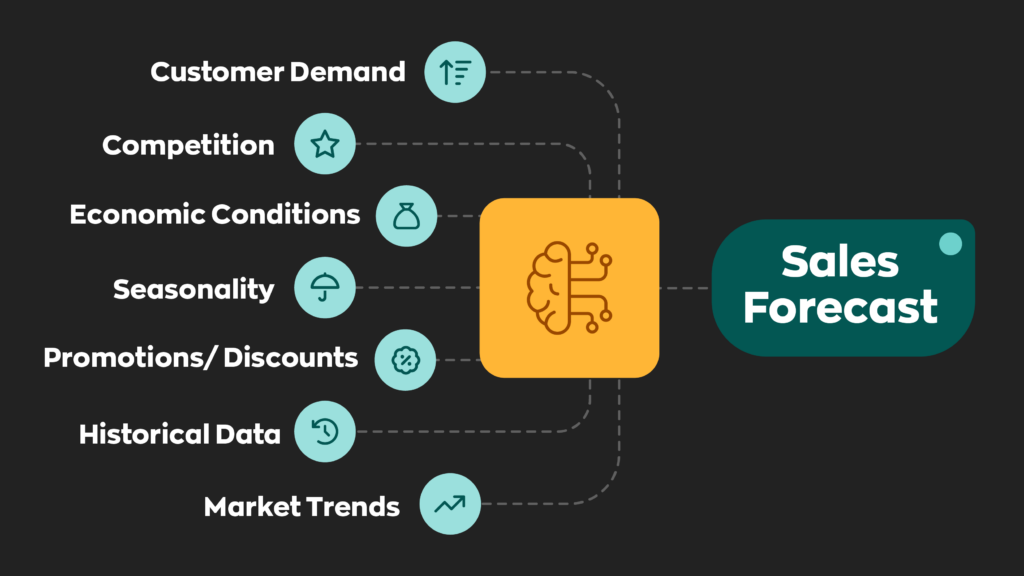
Common challenges
The biggest challenge in sales forecasting is recording the correct data. Although it considers many factors, a sales forecast, at the end of the day, is a lot of number-crunching. If those numbers are incorrect, the end result will also be incorrect– and that can really cost businesses. That isn’t an issue alone, but the average business also generates a lot of data.
Depending on how advanced their analytics are, they could record the number of sales, how much time a customer spends in the store, or overarching factors like market share and seasonality.
That’s a lot of data to record, especially if there are multiple locations. Recording by hand takes a long time and increases the rate of error. It’s why businesses are turning to software instead.
How inFlow can help forecast sales
The techniques outlined in this article are pretty straightforward. The challenge lies in continually adapting your forecasts to shifting market conditions and accurately tracking all the necessary data. This is where software solutions come in handy. Inventory management software like inFlow can track how your products move and generate a variety of reports based on the data it collects
inFlow is a powerful, easy-to-use tool that will handle the historical data collection for you, allowing you to focus on other vital aspects of your business. It’s also accessible on any wireless device, ensuring you can monitor your sales and inventory from anywhere in real-time.

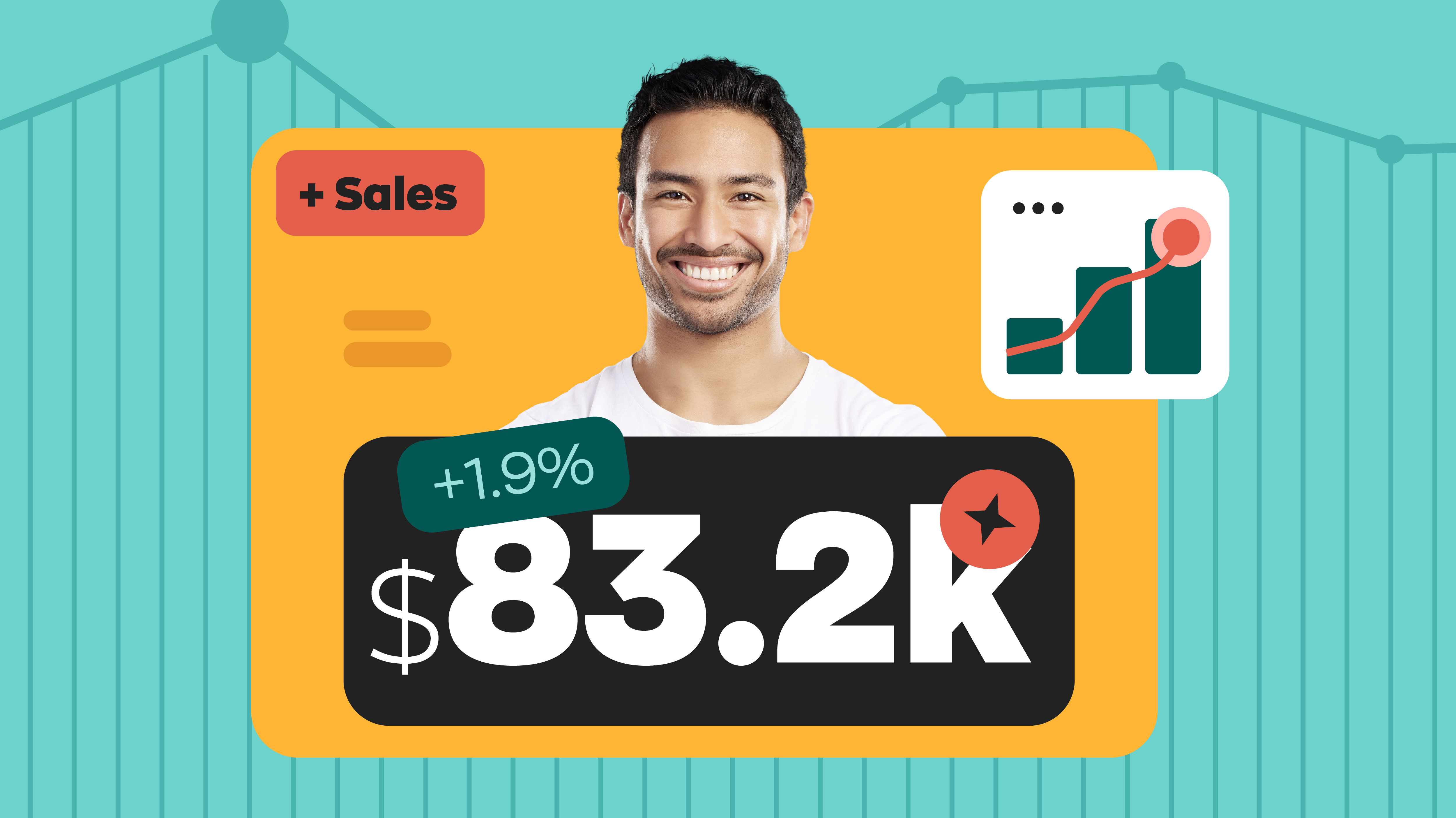
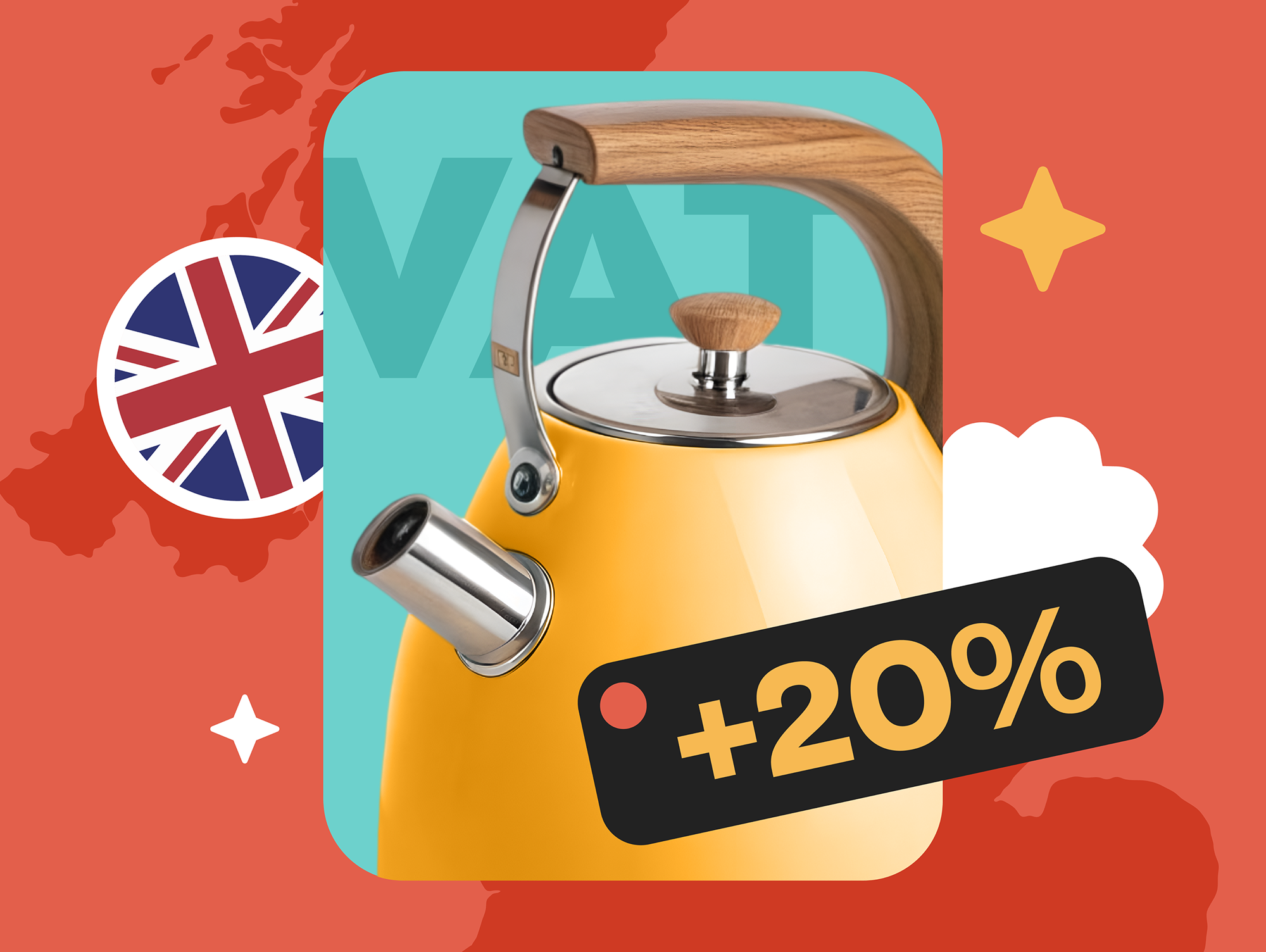
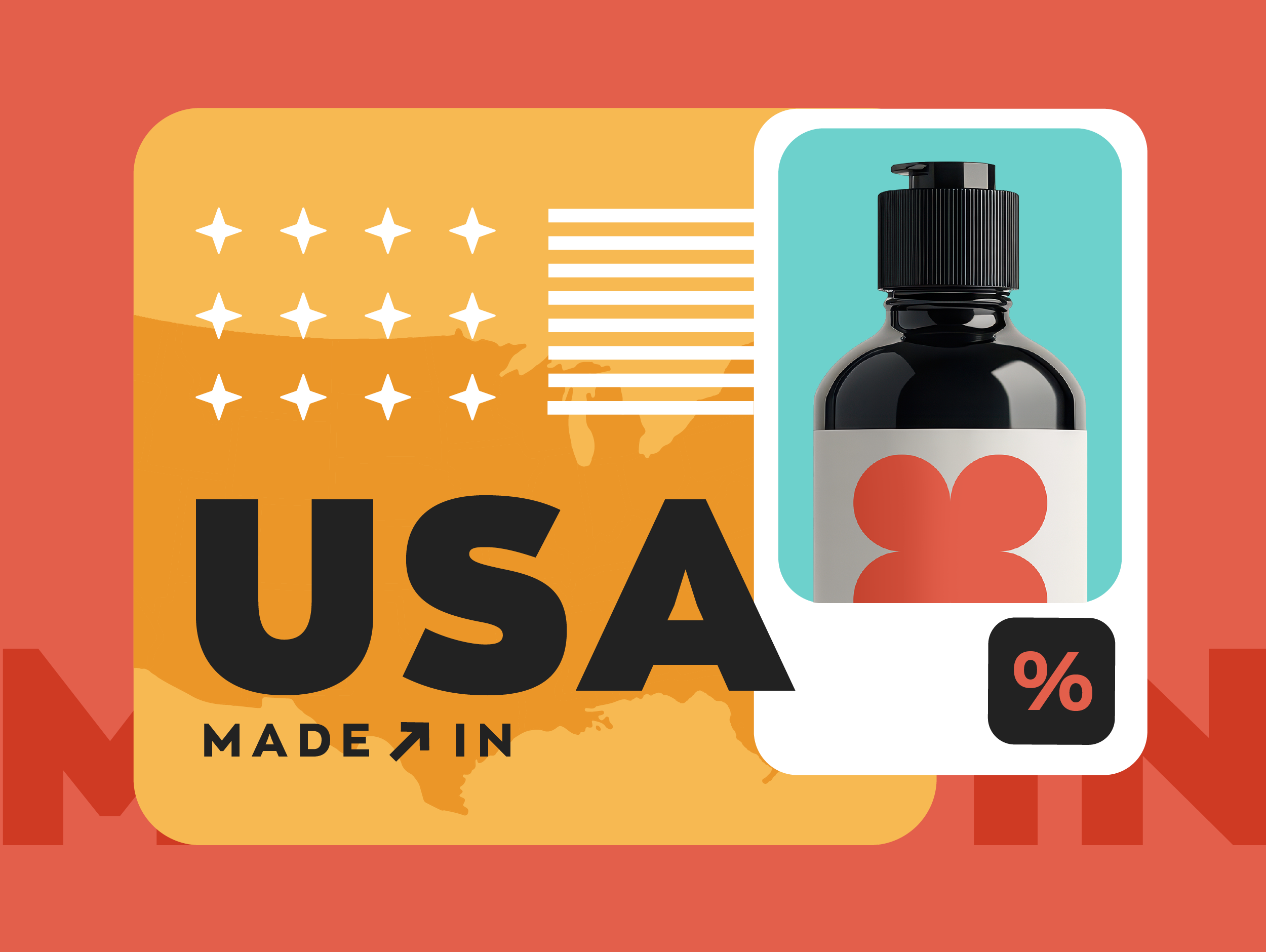

0 Comments